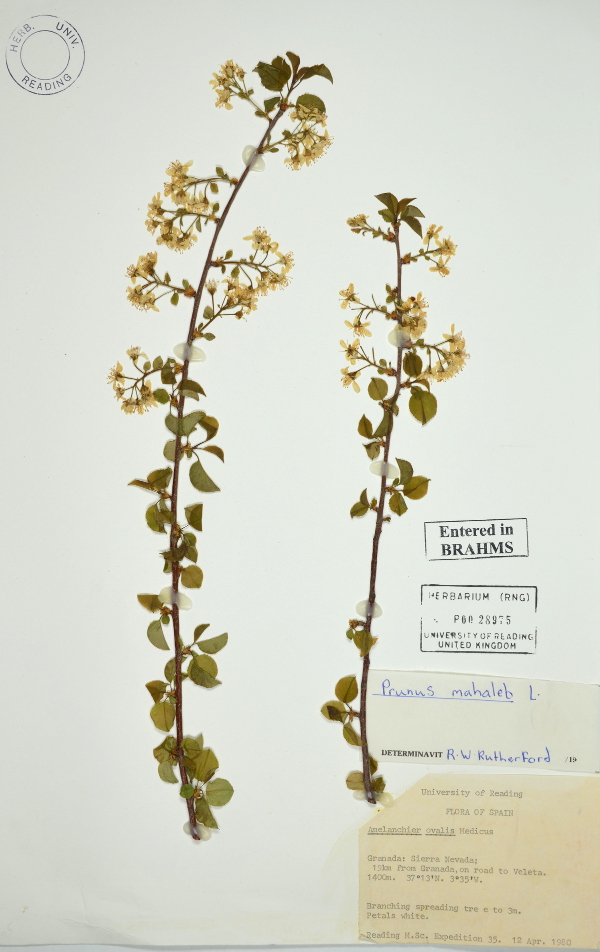By Andrew Bewsey, Jordan Bilsborrow, and Maria Christodoulou
Mahleb is used many festive bakes for its aromatic properties. Found in texts dating to the medieval times, its popularity increased through the expansion of the Ottoman Empire. Prunus mahaleb, the source of Mahleb, is a species of cherry tree which is native to the Mediterranean region as well as parts of Asia. The trees can grow up to 10m and are relatively hardy, found at altitudes of 2000m. The fruit is yellow at first, becoming black later in the season, with bitter flesh and a smooth stone.

Prunus mahaleb herbarium specimen at Reading (RNG)
To obtain the highly scented Mahleb spice that is used often in traditional confectionery in the Eastern Mediterranean and the Middle East, the seeds from the cherries are crushed to a fine powder. The white Mahleb powder, together with Mastic and Cardamom is considered the Holy Trinity of spices for Greek bakers. Due to its similarity to flour, hornswogglers would adulterate it and charge premium prices to unsuspecting customers. To avoid this, traditional cookbooks would advise shoppers to only purchase whole seeds and crush them at home. For optimum extraction, it was suggested that the seeds were toasted prior to being crushed along with either sugar or Mastic.
![Traditional mahleb hand grinder with seeds. By Leslie Seaton (Flickr: Mahleb Grinder) [CC BY 2.0 (http://creativecommons.org/licenses/by/2.0)], via Wikimedia Commons)](https://blogs.reading.ac.uk/crg/files/2015/12/Mahleb_Grinder.jpg)
Traditional mahleb hand grinder with seeds. (By Leslie Seaton (Flickr: Mahleb Grinder) [CC BY 2.0 (http://creativecommons.org/licenses/by/2.0)], via Wikimedia Commons)
In Saudi Arabia, it also has cosmetic uses, mixing the powder with henna to produce traditional wedding tattoos. The extracted oil from seeds is also considered nourishing for hair.
If you wish to attempt a traditional bake for St Basil this year, a recipe can be found here.
Re-visit this blog next week to see some of our own Mahleb cooking.

Pingback: Advent Botany 2015 – Day 15: Mahleb « Herbology Manchester
Pingback: Whewell’s Gazette: year 2, Vol. #23 | Whewell's Ghost
Pingback: #AdventBotany Day 6: Fantastic Mastic | Culham Research Group
Pingback: #AdventBotany Day 16: Cardamom: The Queen of Spices | Culham Research Group
Pingback: Tendrils: 151218 – The Unconventional Gardener